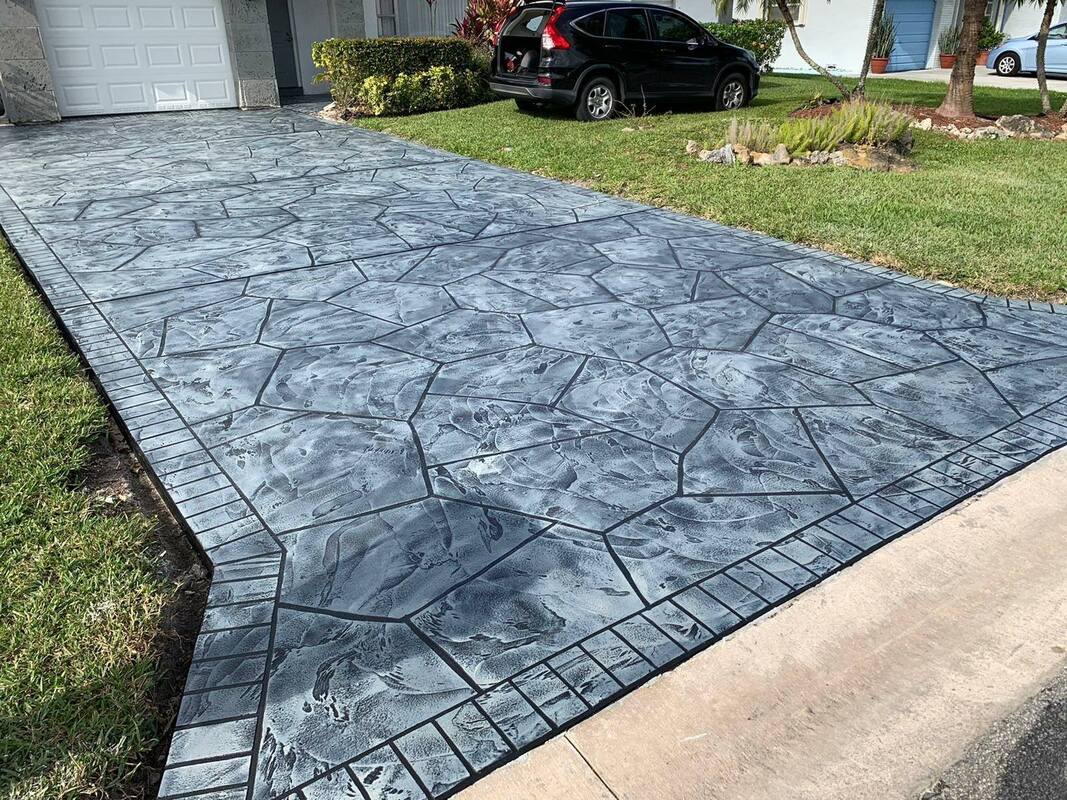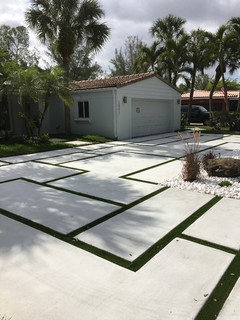Legendary Concrete Brentwood: Where Craftsmanship Meets Development
Legendary Concrete Brentwood: Where Craftsmanship Meets Development
Blog Article
The Environment-friendly Option: Concrete Sidewalks for Your Community
Concrete sidewalks are an ubiquitous attribute in a lot of communities, yet their effect on the environment is frequently overlooked. Choosing concrete for your neighborhood pathways can make a considerable difference in terms of sustainability and eco-friendliness. The advantages of selecting concrete go past mere aesthetic appeals and functionality. By considering the ecological advantages and long-term impacts on the community, the selection of products for walkways becomes an essential choice. Allow's explore why concrete pathways could be the environmentally friendly selection your area needs.
Advantages of Concrete Sidewalks
When considering the installation of sidewalks in a neighborhood, the advantages of choosing concrete over other products are significant and countless. Concrete sidewalks offer toughness, withstanding heavy foot traffic, weather fluctuations, and ecological components much better than different products like asphalt or crushed rock.

Resilience and Long Life
How can concrete pathways surpass various other materials in regards to durability and durability? Concrete sidewalks are renowned for their outstanding resilience and long life compared to alternate products like asphalt or pavers. The fundamental stamina of concrete makes it very resistant to fracturing, shifting, and basic damage brought on by foot website traffic, weather changes, and various other ecological elements. Unlike asphalt, which can soften in high temperature levels and split in freezing conditions, concrete preserves its architectural integrity, needing marginal upkeep over time.
Furthermore, concrete's toughness decreases the need for frequent fixings or substitutes, making it a affordable and sustainable choice for area walkways. By investing in concrete pathways, neighborhoods can enjoy a lasting and reliable framework that improves the total aesthetic appeal and performance of the area.
Reduced Maintenance Needs
Concrete walkways stand out for their very little maintenance demands due to their long lasting nature and lasting efficiency. Unlike alternative products that might need constant repair work or substitutes, concrete walkways supply an economical solution that demands little maintenance in time. Among the key advantages of concrete pathways is their resistance to weathering and erosion. This indicates they can hold up against severe climate condition, heavy foot web traffic, and various other environmental aspects without deteriorating rapidly.
Regular maintenance for concrete sidewalks usually includes straightforward jobs such as regular cleaning to remove debris and occasional sealing to secure the surface area. In contrast to products like asphalt or pavers that might shift, crack, or deteriorate more quickly, concrete walkways preserve their architectural stability with marginal treatment. In addition, any kind of repairs that might be required are generally local and can be addressed swiftly, reducing both the time and cost associated with maintenance.

Ecological Benefits
With an emphasis on sustainability and eco-friendliness, concrete walkways use significant ecological advantages that contribute to a greener neighborhood infrastructure. Concrete is a material known for its durability and long life, lowering the demand for constant replacements. This longevity minimizes the environmental impact connected with the manufacturing and transport of new materials for sidewalk construction. Additionally, concrete pathways have a high solar reflectance index, meaning they mirror a substantial quantity of sunlight rather than preserving and soaking up warmth. This quality helps alleviate the urban warmth island impact, reducing power consumption for cooling down buildings and boosting general comfort in metropolitan areas.
Moreover, concrete is a permeable material that enables water to penetrate right into the ground, lowering stormwater overflow and assisting in groundwater recharge. This aids prevent erosion, lessen flooding, and keep the all-natural equilibrium of water systems in your area. By selecting concrete walkways, neighborhoods can make a lasting selection that favorably influences the setting and enhances the lifestyle for locals.
Enhancing Community Sustainability
By prioritizing sustainable facilities options, communities can grow a harmonious balance between environmental consciousness and community development. Enhancing neighborhood sustainability involves a multifaceted approach that exceeds just the ecological advantages of concrete pathways. Executing eco-friendly areas, promoting energy-efficient practices, and cultivating look at here now a feeling of neighborhood interaction are necessary components of producing a sustainable neighborhood.
One way to boost area sustainability is with the combination of permeable concrete pathways. These pathways enable rainwater to permeate right into the ground, minimizing stormwater overflow and minimizing the pressure on metropolitan drain systems. Concrete Contractor. By including absorptive sidewalks, areas can enhance water quality, reduce flooding threats, and enhance total environmental resilience
In addition, promoting alternative transport methods such as strolling and cycling can significantly minimize carbon emissions and advertise a healthier way of living among homeowners. Producing safe pedestrian pathways, bike lanes, and marked greenways can motivate residents to depend much less on cars and trucks, even more adding to the neighborhood's sustainability objectives.
Conclusion
To conclude, concrete sidewalks use numerous advantages for neighborhoods, including durability, reduced upkeep demands, and ecological advantages. By selecting concrete pathways, communities can improve their sustainability and add to a more green environment. It is clear that concrete walkways are the ideal option for areas looking to enhance their facilities in a long-lasting and ecologically pleasant way.
When taking into consideration the installation find out of sidewalks in a community, the advantages of picking concrete over other materials are many and substantial. Additionally, concrete's sturdiness lowers the need for frequent repair work or substitutes, making it a lasting and cost-efficient choice for neighborhood sidewalks (Legendary Concrete Brentwood).With an emphasis on sustainability and eco-friendliness, concrete pathways offer notable environmental advantages that contribute to a greener neighborhood infrastructure. Enhancing neighborhood sustainability involves a multifaceted approach that goes beyond simply the ecological benefits of concrete sidewalks.In conclusion, concrete sidewalks offer numerous advantages for areas, consisting of toughness, reduced maintenance requirements, and environmental why not check here advantages
Report this page